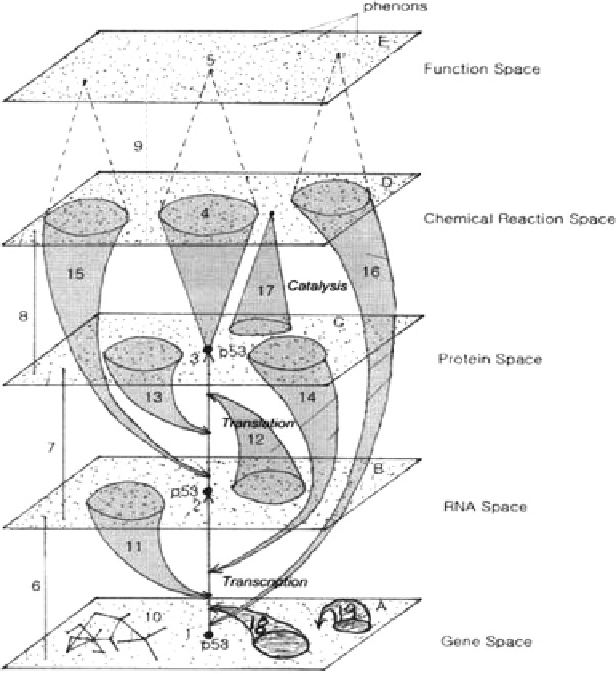Biology Reference
In-Depth Information
Fig. 9.2 An eight-dimensional representation of the “cell hypernetwork” or “cell interactome”
that focuses on p53. The figure consists of five spaces or five traditional networks (depicted as
planes
) each consisting of elements (denoted by
dots
) that belong to the five classes of the entities
indicated on the
right-hand-side
of the figure.
Dissipatons
¼
equilibrons
¼
equilibrium structures;
phenons
¼
phenotypes
the levels of the mRNA molecules encoding the enzymes needed to catalyze
glycolysis (converting glucose to ethanol) decline while those of the mRNA
molecules encoding the enzymes needed to catalyze respiration (converting ethanol
to carbon dioxide and water) and galactose metabolism increase (see Figs.
9.2
and
12.4
). The first observation supports the notion that mRNA levels are
dissipatons,
since their maintenance requires free energy supply, and the second observation
supports the concept that the
patterns of the changes in
(or
trajectories of
)
mRNA
levels
reflect (or can be identified with) cell functions as postulated in the Bhopalator
Any concentration gradients present inside the cell qualify to be called
dissipatons
or
dissipative structures
. Since there are many chemical species in the cell, small
molecules such as ATP, inorganic phosphate, and various ions and macromolecules

